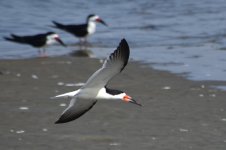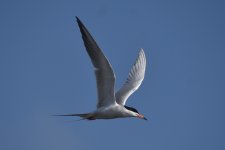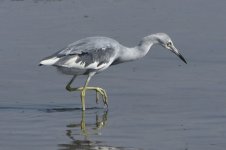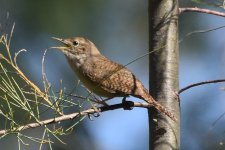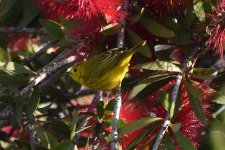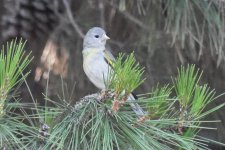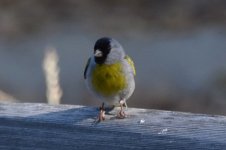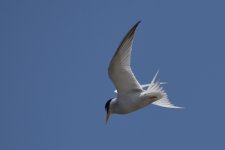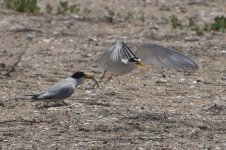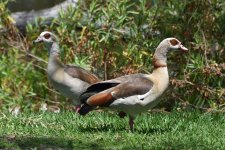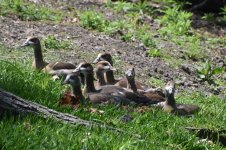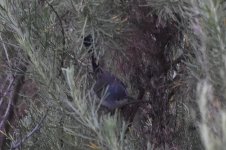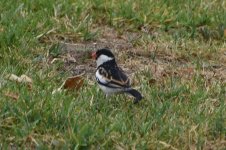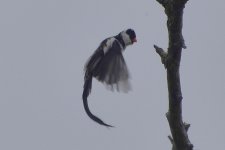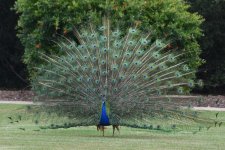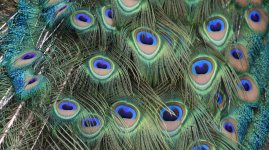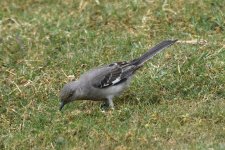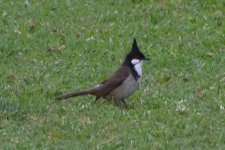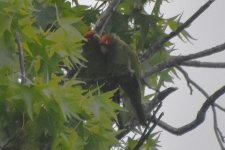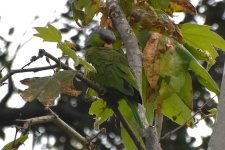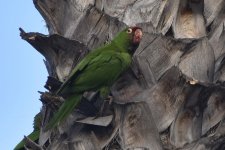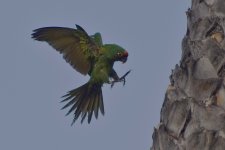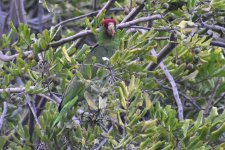9 June 2024
There has been a Yellow-billed Loon in Bodega Bay all winter, and, surprisingly, it has lingered into June. I have been reluctant to go after it because I did not want to drive that far for one bird, and I thought chances of finding it might not be very good. What seem to be the only places for Least Bittern anywhere in the region, however, are in the same direction. Going after the bittern would take me much of the distance to the loon. With two sites for the bittern close to one another, and recent reports of the loon all in the same part of the bay, it seemed like there was a fairly good chance for both species if I went up there and made an effort.
Traffic was light early on a Sunday morning, even through San Francisco. I made it to Las Gallinas Valley Sanitary District by shortly after 8:00 AM. This is just west of San Pablo Bay, the northern extension of San Francisco Bay. Lots of water treatment plants have ponds where they park treated waste water; why the ones here attract Least Bitterns when almost none of the others do is a mystery. Most reports had the Least Bitterns at the northwest corner of the first pond. Walking out there, I enjoyed a continuous serenade by Marsh Wrens and Song Sparrows. Mother Mallards and Gadwalls had lots of babies following them around. There were a few heron types: Great Egrets, Snowy Egrets, Black-crowned Night Herons, and Green Herons, but I reached the location with no sight or sound of a bittern of any sort. The cattails were quite thick and tall there, so I continued around to where they were a bit shorter and there was a better view over the pond. And it was there that a low horse chuckling announced the presence of a Least Bittern. It was a bit frustrating – the bird had to be quite close to me, but I never got a look at it. Still, I was quite pleased overall; this is not an easy bird to find in California. Las Gallinas is also a good spot for Mute Swans, and I saw one on the way out. These are not native to the Americas, but there are established populations in parts of the east and midwest. A feral population has existed in the northern San Francisco Bay Area for many years now, but is not yet considered fully established. The Las Gallinas eBird list:
https://ebird.org/checklist/S180668928.
I did not linger too long over the Least Bittern; I wanted to get on to Bodega Bay and look for the Yellow-billed Loon. It was a pleasant drive over to the coast. Passing through grasslands along much of the way, I wondered how many Grasshopper Sparrows might have been in them. I suspected there might be lots. The town of Bodega Bay is best known for having been the location of the Alfred Hitchcock movie
The Birds. Unlike the birds in the film, as far as I know the real birds of Bodega Bay have always been reasonably well behaved. The bay is small enough that one can scan most of it from the shoreline. I worked my way around the north end, where recent reports had the Yellow-billed Loon, then along the west side. Then I worked my way back. I saw at least a dozen Common Loons, but there were none I could convince myself was the Yellow-billed. I stopped and had a sandwich. A Western Gull kept a close eye on me, but did not attack. I started around the north end again and was able to stop at a parking spot that had been occupied before. Just off shore was the bird I was looking for. It was rather ratty looking, still in worn winter plumage. I guessed it was not going to make it north to its breeding grounds this summer. By this time it was still early afternoon, but I started back home. Sunday afternoon heading into San Francisco traffic can be bad as those who have been out for the weekend or the day go back to their homes. It was certainly slower than the trip north, but I made it home myself without any real trouble. eBird list for Bodega Bay (just the Yellow-billed Loon stop):
https://ebird.org/checklist/S180670533.
Two countable species today, Least Bittern and Yellow-billed Loon, and I have climbed up to 346 for the year.




